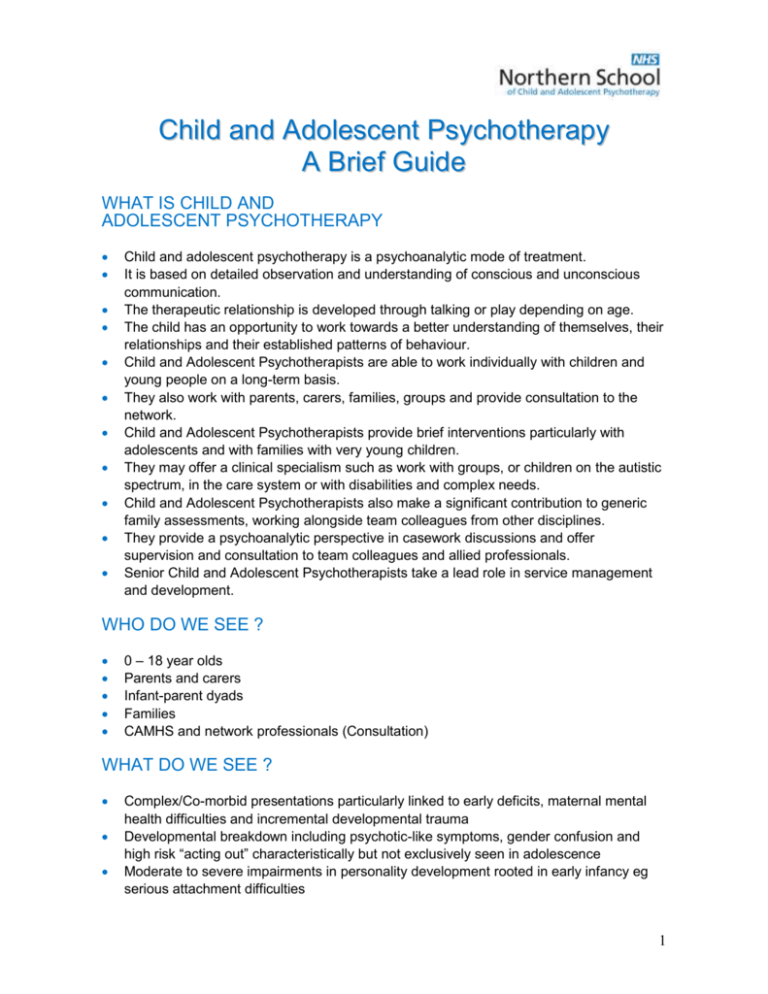
August 27, 2024
Partnership And Partnership Formation Procedures In Psychiatric Therapy: A Dual-perspective Qualitative Study
Therapist-client Connection Building This article will certainly look into the details of developing a durable therapist-client relationship, exploring its significance, strategies for development, and means to conquer prospective obstacles. In future researches the sample size must be increased, to make sure that empirical assistance for SEM versions can be more powerful. Scientists should see to it that people with various characteristics in regards to additional variables are highly represented, to make sure that analyses taking their the impact of these variables into account can be executed. The current example was too tiny and also heterogeneous to enable identifying uniform subgroups of topics. It ends up being essential in the future to identify the potential mediators of the examined relationships.Therapeutic Relationship Version: 3 Elements Explained
The secrets of great client relationships - Creative Bloq
The secrets of great client relationships.
Posted: Wed, 27 Sep 2017 07:00:00 GMT [source]


- Throughout this 2nd stage, there is a common duty in pursuing objectives.
- By involving customers in these processes, you promote a feeling of ownership and motivation, causing better results.
- As component of this phase, specialists might become a lot more confrontational and obstacle customers' ideas and actions.
The Restorative Partnership: The Foundation Of Restorative Success
I do assume there is a threat that she might feel by doing this' (specialist, dyad 10). ' He is now touching some aspects of my personality and my life [...] which I've constantly understood existed, but have never been able to recognize to myself. Afterwards, the very first author prepared a full-day analysis seminar gathering the rest of the study group. The group were provided a complete and in-depth discussion of each dyad with quotes and excerpts of the data product, and preliminary themes with a regularity table giving an overview of which dyads added to each style.Restorative Connections Vs Social Partnerships
Meetings with psychotherapists have likewise revealed that an understanding of psychiatric therapy for the interpreter would boost partnership and therapy [Hanft-Robert et al., 2018] The interpreter Anorexia Nervosa can be recognized as connecting the linguistic-emotional interaction void with the specialist, allowing the individual not just to speak in his/her indigenous language, yet also to construct a connection with the specialist. The interpreter first has to comprehend what is claimed on an emotional degree prior to he/she can pass it on the therapist as if the specialist can really recognize and offer aid to the patient. This highlights just how much of a risk is posed by utilizing lay interpreters, which entails a raised chance of a poor translation service [Flores, 2005] Frisch et al. (33) discovered a moderate relationship (0.42-- 0.57) of lifestyle and wellness to treatment using psychiatric therapy. There is a clear power dynamic within the restorative connection, which is why values, boundaries, and twin connections are a critical part of psychiatric therapy training and qualification. When therapists can recognize transference and develop healthier reactions, it reinforces the healing partnership and educates clients much healthier means of engaging with others. The healing partnership is crucial throughout numerous therapeutic techniques, including cognitive-behavioral treatment (CBT), psychodynamic treatment, humanistic treatment, and extra. While the techniques and methods may differ, the healing alliance stays an important component of successful treatment. The stamina of the healing alliance can transcend particular healing models, highlighting its global importance. Ultimately, the area must really feel risk-free and safe and secure, a location where the client can talk openly without being heard or interrupted. All civil liberties are reserved, consisting of those for message and information mining, AI training, and similar technologies. For all open access web content, the Creative Commons licensing terms apply. By Arlin Cuncic, MAArlin Cuncic, MA, is the author of The Anxiety Workbook and creator of the internet site Concerning Social Anxiety. Sign up with 550,000+ aiding specialists that secure free, science-based tools sent out directly to their inbox. In a classic dyadic setting, the development of the therapeutic alliance relies on patient-therapist communication and is essentially referred to as the recurring job of the specialist [Sachse, 2016] Empathy, unconditional positive regard, and reliability, specialist variables coming from client-centered psychology, are thought about vital elements of an excellent healing alliance, regardless of the form the therapy takes [Schnell, 2014] In a setup including an interpreter, nonetheless, the restorative partnership is no more established exclusively by the therapist and person, yet additionally greatly by the interpreter [Miller et al., 2005; Tribe and Thompson, 2009; Mirdal et al., 2012] This area was exacerbated when the specialist went after therapeutic effectiveness over the relationship. If the client did not feel safe, acknowledged or seen as a person, there was no room or agreement for treatment. Better, major tears or a lack of connection became deadly when not attended to, as in dyads 4, 9, and 11. Second, generating a dyadic perspective, therapists typically experienced the functioning alliance as solid when there was, simultaneously, continuous healing job. Their experience was that when the actual partnership was established-- manifested in count on and confidence in the therapeutic job-- healing work started flawlessly, spiraling into an emerging collaborative functioning alliance. On the other hand, when the actual partnership was frail, there was less room for healing job. Cooperation is key to encouraging customers and advertising their active participation in the healing process. Encourage them to take part in decision-making, goal-setting, and treatment planning. By involving customers in these processes, you advertise a feeling of ownership and motivation, resulting in better end results. A solid bond can assist the partnership endure these problems but just how a therapist negotiates uncomfortable minutes is of utmost significance. Ruptures in the partnership must be fixed and solved if treatment is to continue effectively. In the complying with, we detail each of the four motifs, starting with the experiences and procedures underlying a positive relational outcome (group one), adhered to by the experiences and procedures underlying a distressed relational end result (group two). The discussion of each motif includes a dyadic discussion, aiming to show how both customer and therapist contribute to the process.Social Links